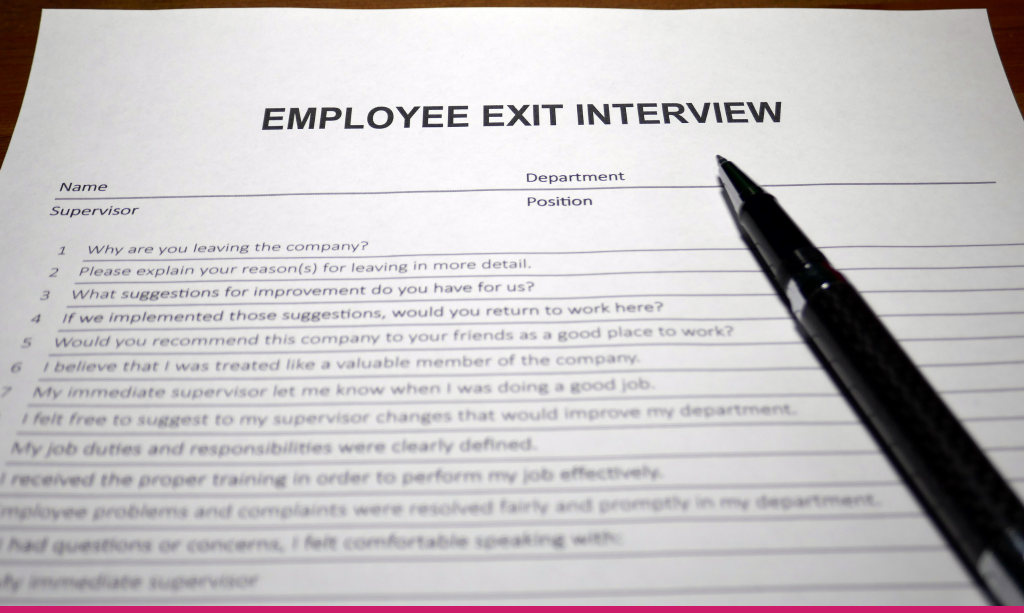How to Conduct an Effective Employee Exit Interview

An effective employee exit interview entails a discussion between a departing staff member and a representative from the employer, often a part of the human resources team. The primary objective of such interviews is to obtain insights from the employee regarding the factors influencing their departure, their overall journey within the organization, and suggestions they might have for enhancement. These exit interviews hold the potential to offer valuable understandings that enable employers to curb turnover rates, amplify employee contentment, and fortify their organizational reputation.
However, not all exit interviews hold the same level of effectiveness. Instances of poorly structured, inadequately executed, or insufficiently analyzed interviews can lead to wasted time and overlooked opportunities. To ensure the potency of exit interviews, employers should adhere to established best practices and steer clear of common pitfalls. Below is a compilation of tips for conducting a successful effective employee exit interview.
Before the Effective Employee Exit Interview
• Select an interviewer:-
The individual responsible for conducting the exit interview should possess the ability to establish a relaxed and trustworthy environment, encouraging the departing employee to openly express their candid viewpoints. Ideally, the interviewer should be an individual with no direct engagement in the employee’s tasks or oversight, such as a proficient human resources specialist or an external advisor. Moreover, the interviewer ought to possess a comprehensive understanding of the employee’s role, and duties, as well as a grasp of the organization’s culture and regulations.
• Prepare in advance:-

The interviewer should meticulously formulate a set of inquiries that encompass pivotal subjects of concern. These may include the rationale behind the employee’s departure, their level of job contentment, interactions with both superiors and peers, the prevailing work ambiance and ethos, as well as recommendations for refinement. Absolutely, it’s crucial for these questions to remain open-ended, unbiased, and precise, completely free from any hint of evaluative phrasing. In addition, the interviewer should peruse the employee’s performance records, feedback surveys, and pertinent data before the scheduled interaction.
• Schedule a convenient time and place:-
The timing and setting of the exit interview should be mutually accommodating. When interviewing a departing employee, it’s best to schedule the meeting a few days before their final workday. Selecting a private and serene setting, devoid of disruptions or diversions, is equally essential for the exit interview’s success.
During the Effective Employee Exit Interview
• Explain the purpose and process:-
The interviewer should start the effective employee exit interview by explaining the purpose and process of the meeting. The interviewer should emphasize that the exit interview is voluntary, confidential, and constructive and that the feedback will be used to improve the organization and its employees. A good exit interviewer will explain how long it will take and what questions to ask.
• Ask open-ended questions:-
The interviewer’s approach should revolve around posing open-ended inquiries, permitting the employee to articulate their viewpoints and sentiments in their own manner. It’s pivotal to steer clear of queries that prompt mere yes-or-no responses or restrict the employee to multiple-choice options. Additionally, the interviewer should refrain from raising questions that insinuate criticism or fault, such as “What aspects of your job did you find disagreeable?” or “In what ways did your manager falter?” Instead, the focus should be on queries that encourage optimistic and constructive insights, like “What aspects of your job did you derive the most satisfaction from?” or “In what manner could your manager offer you enhanced support?”
• Listen actively and empathetically:-

The interviewer’s role involves engaging in attentive and compassionate listening to the employee’s responses, demonstrating genuine curiosity and regard. By nodding, smiling, rephrasing, or asking additional questions, you can make them expand on their viewpoints. The exit interviewer must refrain from interjecting, discussing, or championing the organization. Instead, the focus should be on acknowledging the employee’s emotions and viewpoints, without necessarily endorsing or refuting them.
• Take notes and record key points:-
The interviewer should take notes and record key points from the employee’s answers during the exit interview. The notes should be concise, accurate, and objective, capturing the main themes and examples from the feedback. The notes should also include any action items or recommendations that arise from the discussion. Recording notes electronically is easier to analyze and store if the interviewer uses a digital device or online tool.
After the Effective Employee Exit Interview
• Thank the employee and follow up:-
The interviewer should thank the employee for their time and feedback at the end of the exit interview. They should also ask the employee if they have any questions or concerns about their departure or transition. The interviewer should supply the employee with pertinent information or resources for their next steps, like contact details, references, benefits continuation, or alumni network. Moreover, the interviewer should also follow up with the employee after a few days or weeks to check on their status and offer any additional assistance.
• Analyze and report the results of effective employee exit interview:-
The interviewer is tasked with evaluating and documenting the outcomes of the exit interview, aiming to discern recurring themes or tendencies within the feedback. This involves a comprehensive examination of feedback from diverse employees, encompassing a spectrum of roles, durations of service, demographics, departments, or geographical locations. Notable strengths and weaknesses, prospects and challenges, as well as effective strategies or domains necessitating refinement that surface from the feedback, should be spotlighted. The result should be a succinct overview that encapsulates key discoveries and suggestions derived from the exit interview. This summary report should be shared with pertinent stakeholders within the organization.
• Take action and monitor progress:-

After the exit interview, proactive measures and ongoing oversight are entrusted to the interviewer in line with the obtained insights. Prioritizing and addressing departing employees’ most prominent and critical concerns is crucial to implementing recommendations effectively. Effective communication and cooperation with the managers and staff members implicated in or influenced by these modifications is equally paramount.
An effective exit interview includes assessing how these changes will affect the organization and the employees. To optimize outcomes, introduce adjustments or refinements if deemed necessary. In order to rank well in search engines, you must optimize your homepage.
Conclusion
Employers can use exit interviews to gain valuable insights into departing staff and improve their organizations. Employers can efficiently conduct exit interviews by adhering to established best practices and avoiding common traps. In addition to reducing turnover rates, the organization can also improve employee satisfaction and strengthen its brand reputation.
Recent Posts
- How People Analytics Can Utilize Data to Drive Business Results
- The Role of AI in Enhancing Employee Feedback Systems
- How Purpose-Built AI Can Help You Build A Great Customer Experience
- Why is Customer Sentiment Analysis Crucial to Your Business?
- Customer Experience Statistics You Need To Know for 2025 | CX Statistics 2024



